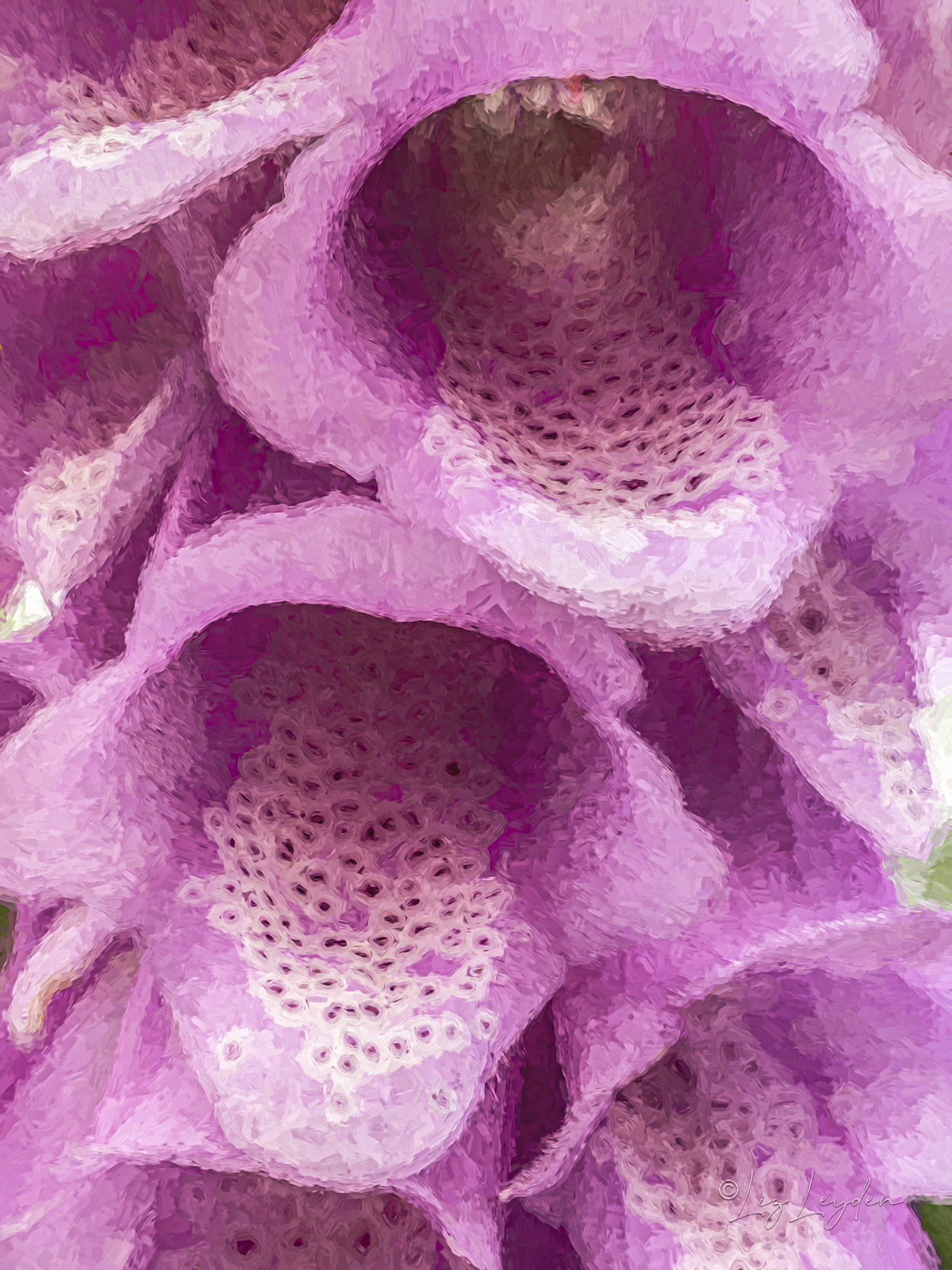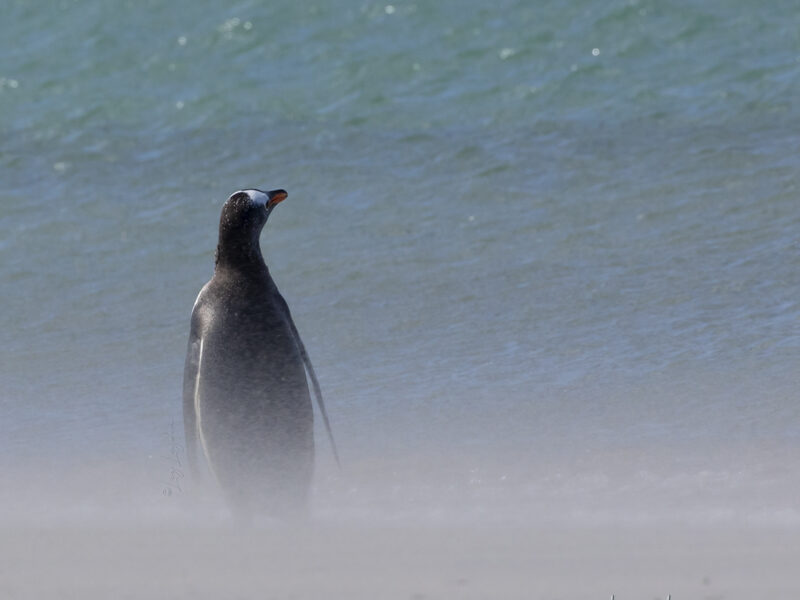Detail of flowers of the wild Digitalis purpurea, Common Foxglove.
Digitalis purpurea is the species of wildflower which is common in Scotland, as well as much of Europe. It is a biennial member of the Plantaginaceae (plantain) family. Foxgloves are specially adapted to be pollinated by Bumblebees. They have a succession of flowers on a long cluster, so that even a few cold and/or wet days when their pollinators are not active doesn’t prevent them from being pollinated, as the plant as a whole is in flower for a few weeks. Also, as they flower in order from the bottom to the top, the flowers are still visible as the surrounding vegetation grows up around them.
The adaptations include:
Colour: purples and pinks are very attractive to bumblebees. Also as they shed many seeds, there are often groups of flowers growing together which makes a large bank of colour, unmissable as bees fly around.
Having a large, wide mouth with spots indicating to the bee exactly where it should land.
The bell-shaped flowers are narrow enough to firstly close the bees wings as they start to crawl towards the nectar at the base of the flower. Also most bumblebees have to squeeze along the bell/tunnel towards their food, so that pollen from the stamen is rubbed onto their hair. If the bee has already visited another foxglove, the pollen from that flower will be rubbed off onto the stamen thereby pollinating it. If it hasn’t visited a previous foxglove, it will take the pollen from the first flower onto the next one it visits, another benefit of a group of flowers growing near to each other.
Foxgloves have guard hairs at the entrance to their ‘bells’ which help to prevent smaller insects from entering the flower: they might be able to reach the nectar with out any deposit of pollen.
This image is copyright © Liz Leyden, all rights reserved.
The Foxglove artwork is for sale as wall art or as various home or personal accessories at Pixels.com.


